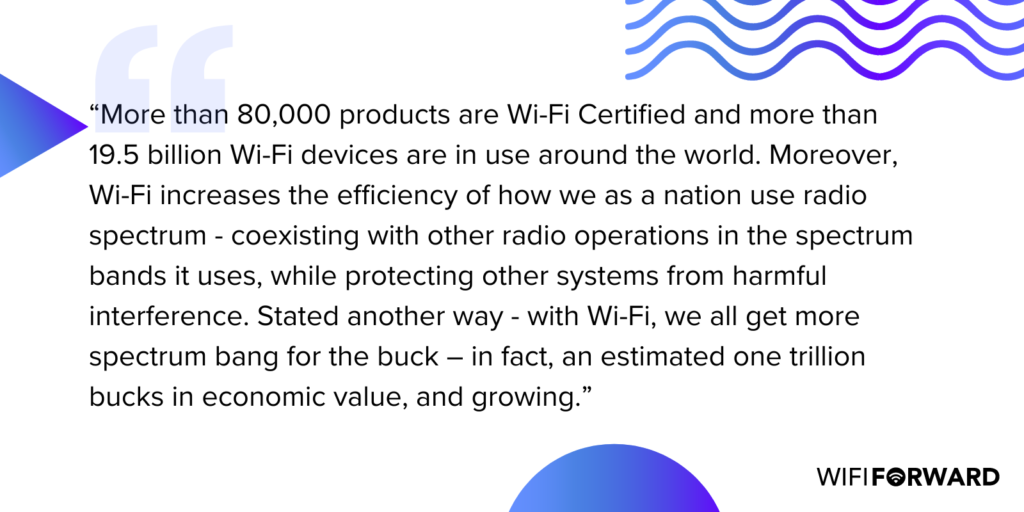Wi-Fi is the “Swiss army knife” of wireless connectivity – there when you need it, and the possibilities for what you can do with it are endless. The recent cellular outage is just one example of myriad ways Wi-Fi has become integral to how we communicate. “We encourage the use of Wi-Fi calling until service is restored,” AT&T said in a statement. Good advice!
While Wi-Fi served as a critical backup to consumers impacted by the cellular service outage, most of the time, consumers are using both Wi-Fi and mobile services or switching seamlessly between the two. For example, when you arrive at your office in the morning, your phone will likely switch from cell service to your office Wi-Fi, and then when you get back home at the end of the day, it will connect to your Wi-Fi at home. In fact, Wi-Fi networks support 90% of data traffic because Wi-Fi sits at the edge of every broadband connection whether wired or wireless.
Wi-Fi continues to prove to be an invaluable American innovation that we depend on so frequently in modern life – for in our cars, on public transportation, to connect to healthcare providers, as a tool for education and information-gathering, to interact with government services, entertainment, and more. Wi-Fi ensures our ability to connect to each other and to essential resources.
To do this important work, Wi-Fi needs abundant unlicensed spectrum to operate and high-bandwidth use cases continue to consume more and more data. More than 80,000 products are Wi-Fi Certified and more than 19.5 billion Wi-Fi devices are in use around the world. Moreover, Wi-Fi increases the efficiency of how we as a nation use radio spectrum – coexisting with other radio operations in the spectrum bands it uses, while protecting other systems from harmful interference. Stated another way – with Wi-Fi, we all get more spectrum bang for the buck – in fact, an estimated one trillion bucks in economic value, and growing.

As existing Wi-Fi channels became overcrowded and constrained, the Federal Communications Commission (FCC) wisely recognized the need for growth and opened a new spectrum band for Wi-Fi in 2020, from 5925-7125 MHz. This was the first “new” spectrum for Wi-Fi since 2006, and the first since smartphones became ubiquitous in 2007. Now the question is: for the future, how do we grow access to spectrum for Wi-Fi so that it can continue and extend its role in our connected lives?
Spectrum policymakers are well advised to consider extending Wi-Fi’s access to spectrum into the 7 GHz band. This will build on the important spectrum band the FCC recently made available, providing a key ingredient industry needs for Wi-Fi 7, the next generation of Wi-Fi that will enable gigabit speeds. Whether it’s the next “Swiss army knife” moment, or satisfying the relentless growth in broadband speeds, or the need for channel diversity and low latency, now is the time to pave the way for the future of Wi-Fi.
